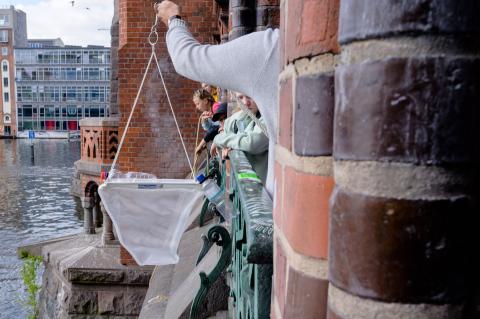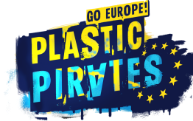
With the Citizen Science approach, extensive data can be collected through the help of many volunteers. Much more than a single research team could ever collect in a foreseeable period of time! This is also the case in the "Plastic Pirates - Go Europe!" project. School classes and youth groups throughout Germany collect data on litter found on and in rivers. The information collected is uploaded to a central database and then analyzed by scientists. However, to ensure that the findings are also recognized within the scientific community, the quality of the data obtained must first be proven. In fact, the correctness and comparability of Citizen Science data are often strongly doubted, since the participants - in our case young people between 10 and 16 years of age - have usually not (yet) received a thorough scientific education.
In the Plastic Pirates project, we have already gained a lot of experience with students collecting scientifically relevant data. Therefore, we know that this can work wonderfully! With our research work, we are committed to developing suitable and practicable procedures to test and prove the quality of the data collected by citizens. To this end, Sinja Dittmann and Tim Kiessling from the Kiel Science Factory (Kieler Forschungswerkstatt) presented the exact procedure in the Plastic Pirates project at the Engaging Citizen Science conference in April 2022 in Aarhus, Denmark.
It is important to formulate concise research questions, provide accompanying educational material, and apply a uniform, standardized sampling procedure that is reduced in complexity, thus minimizing potential errors during sampling. It is also important to incorporate consistent control mechanisms during sampling in the field. In the case of the plastic pirates for example, the counted waste objects are not only recorded in writing, but photos are also taken of the sorted waste findings. In this way, the results can be precisely compared by the scientists later. To finally publish the data after the analysis of the results, it must be made transparent which data sets were excluded from the analysis and why. In summary, the high quality of the citizen science data from the Plastic Pirates project could only be ensured through comprehensive planning before, during, and after data collection.
With the help of the quality assurance strategies described above, the scientists in the Plastic Pirates project have already succeeded in publishing their research findings in high-ranking scientific journals on several occasions (e.g., Environmental Pollution, and Science of the total Environment). The procedure and the decisive factors for acceptance in the scientific community have been described in detail by Sinja Dittmann and colleagues in the conference report (available here). The paper offers good orientation and suggestions for other Citizen Science projects.
During the German EU Presidency in 2020, the campaign was extended to the countries of the Trio Presidency and implemented in the period 2020 to 2021 as a joint action of the Ministries of Education, Science and Research of Germany, Portugal and Slovenia. Since 2022, the expansion of Plastic Pirates has been supported by the EU Commission, so that synchronized sampling can take place in a total of ten European countries in the fall of 2022.
